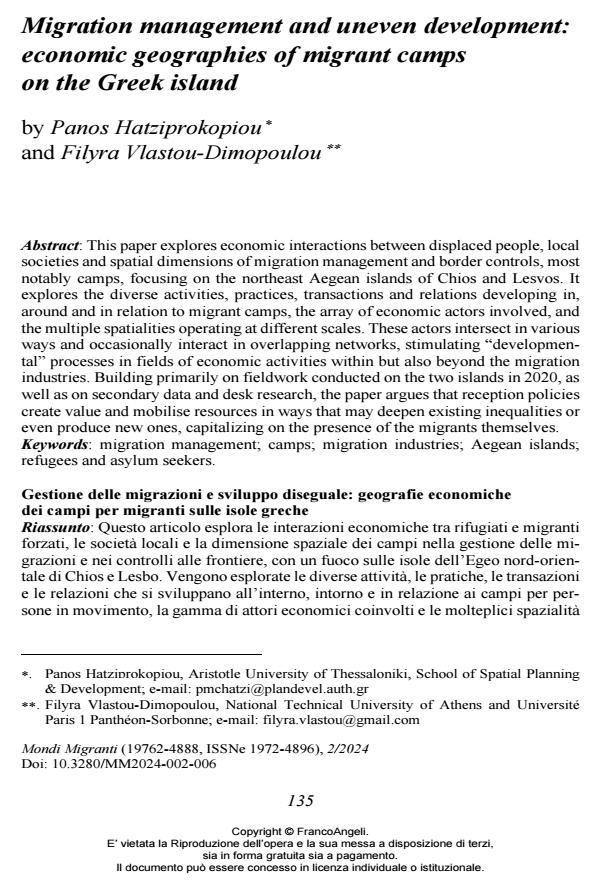Migration management and uneven development: economic geographies of migrant camps on the Greek island
Journal title MONDI MIGRANTI
Author/s Panos Hatziprokopiou, Filyra Vlastou-Dimopoulou
Publishing Year 2024 Issue 2024/2
Language English Pages 24 P. 135-158 File size 250 KB
DOI 10.3280/MM2024-002006
DOI is like a bar code for intellectual property: to have more infomation
click here
Below, you can see the article first page
If you want to buy this article in PDF format, you can do it, following the instructions to buy download credits

FrancoAngeli is member of Publishers International Linking Association, Inc (PILA), a not-for-profit association which run the CrossRef service enabling links to and from online scholarly content.
This article focuses on Lampedusa as an exemplary case study of economic transformation brought about by migration, as well as the creation of a ‘migra-tion industry’. On the basis of interviews with key informants and a reconstruction of the secondary literature, it shows how migration has given international visibility to the island, starting from the first arrivals of emigrants in the 1990s, through the increase in landings during the so-called ‘Arab Spring’, and up to the pre-sent. This has fed various processes of conversion from an economy based on fishing towards an economy built around relatively recent tourism. Further-more, it highlights how the national, European and international policies of migration governance have contributed to creating an industry based on con-sumption by the military, police, volunteers, health and humanitarian person-nel present on the island and the impact this has had on the local service sec-tor.
Keywords: migration industry; migration satellite activities; Lampedusa; tour-ism; refugees and asylum seekers.
- Camp studies trapped in the camp? Re-articulating recent Greek history through the camp as a productive device Lafazani Olga, in Political Geography 103447/2026 pp.103447
DOI: 10.1016/j.polgeo.2025.103447 - Energy as social relation: Refugees' energy commons for infrastructuring beyond the grid Maria Kaika, Charalampos Tsavdaroglou, in Energy Research & Social Science 104448/2025 pp.104448
DOI: 10.1016/j.erss.2025.104448
Panos Hatziprokopiou, Filyra Vlastou-Dimopoulou, Migration management and uneven development: economic geographies of migrant camps on the Greek island in "MONDI MIGRANTI" 2/2024, pp 135-158, DOI: 10.3280/MM2024-002006